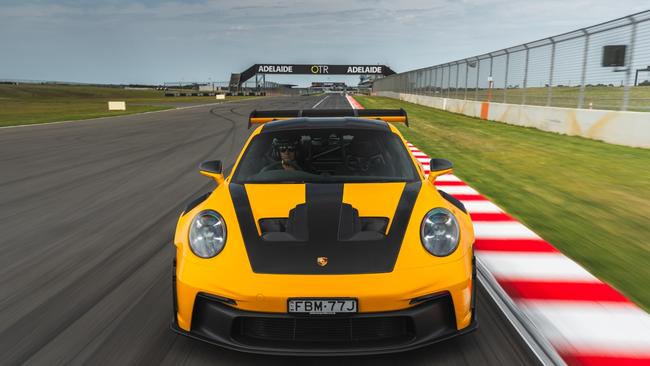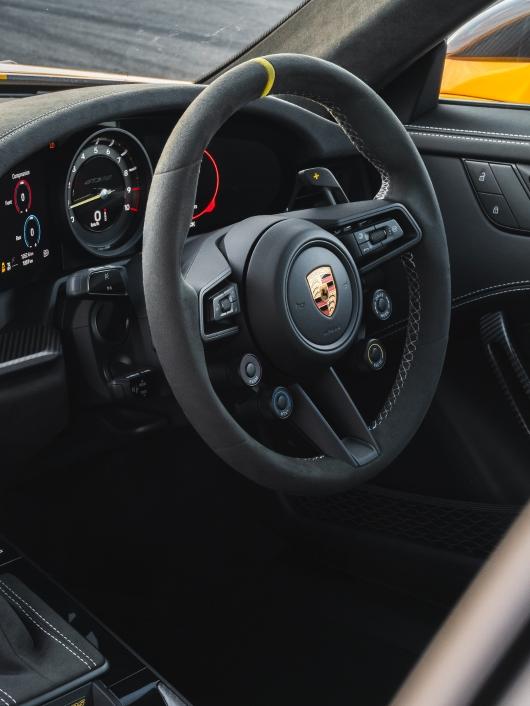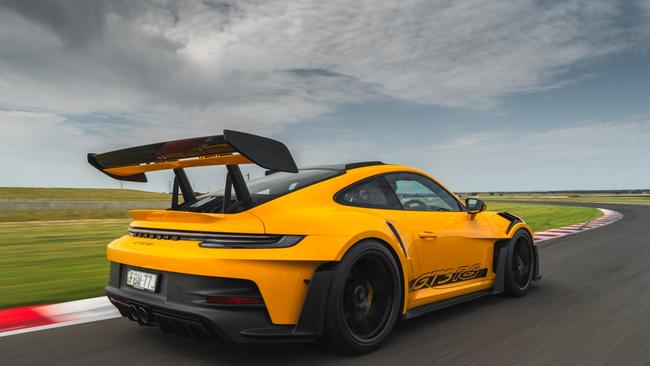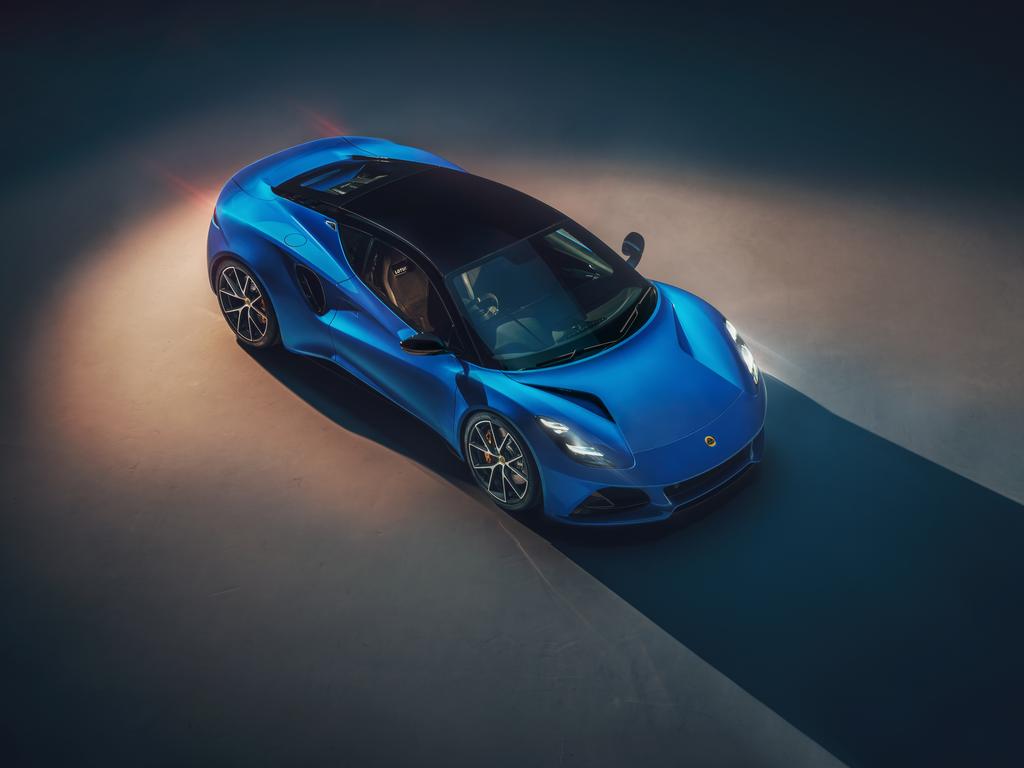Porsche 911 GT3 RS is the closest you can get to a racing car
To call Porsche 911 GT3 RS aggressive is an understatement, like saying Usain Bolt was good at jogging. This latest evolution of the 911 has moved beyond its direct rivals.

Try and picture an F1 car with number plates. Not only would it play merry hell with the aerodynamics, it would look ridiculous, and no speed camera in the world would have a frame rate fast enough to catch a picture of it anyway.
Frankly, number plates look equally out of place on the new Porsche 911 GT3 RS. That’s because this particular version of the iconic 911 is the closest you can get to a racing car without needing a helmet (although you will need one when you inevitably take it to the track to drive it as the maker intended).
Number plates on this intimidating and aggressive version of the 911 look like a finely honed and muscular Olympic athlete having their skin-tight, aerodynamically appropriate running gear spoiled by a paper number pinned to their chest.
Of course, to call this car aggressive, or even extreme is an understatement, like saying Usain Bolt was good at jogging.
Just look at the photos (and try to avoid the number plates). There are aerodynamic appendages on nearly every surface. In fact, almost every panel on the GT3 RS is different from those on the already very quick 911 GT3, because Porsche has searched for any and every way to make this version even faster.
It can’t have been easy for the Porsche boffins, who, having had to improve on already stunning previous versions, must surely have been running out of conventional ways to make it better.
By “conventional” I mean the obvious elements of a fast car – a more powerful engine, bigger tyres and less weight. Making its 4.0-litre flat-six engine more powerful, fitting even bigger tyres or shedding weight were all challenging.
So Porsche turned to its lengthy and broad motorsport heritage to find ways to make this 992-generation 911 GT3 RS something special. The result is a car that looks more like it should be on the Le Mans starting grid than scaring mortal cars at traffic lights.
The only way Porsche could think of making this 911 faster around a track was to make it corner faster, which meant diving into the dark arts of aerodynamics, resulting in this extreme machine. The rear wing, with its multiple elements and Formula One-style Drag Reduction System (DRS), is the most obvious feature but there are changes from the front bumper to the rear.
One of the coolest features that you can’t see is that underneath the front end, Porsche has scrapped its traditional radiator layout and instead uses a very similar arrangement to the 911 RSR that you see on track at Le Mans. Why? Because it allows for a bigger front splitter (or spoiler) and that provides a huge downforce boost and keeps the GT3 RS stuck to the track.
It actually has a DRS system of its own, with flaps that open or close depending on the situation. This works in unison with the huge rear wing, which, in a Porsche road car first, actually sits higher than the roofline to ensure it’s in undisturbed air.
While those may sound like obvious changes, Porsche left no stone unturned, even reshaping the suspension arms with F1-style teardrop-shaped profiles that cut through the air cleaner; even when they are hidden underneath the wheel arches.
Even all of that is really only scratching the surface of the changes Porsche has made, but the one detail you really need to know is all these aerodynamic improvements add 409kg of downforce at 200km/h, which means it has three times more than the GT3.
The knock-on effect of that is the 911 GT3 RS requires a higher level of driving than most people are capable of, because to maximise its speed you need to be willing and able to drive into corners faster than your brain will tell you is safely possible.

Down the long front straight at The Bend racetrack in rural South Australia, the 4.0-litre flat-six engine pushes out all 386kW of power and 465Nm of torque it can muster as it reaches more than 240km/h before you hit the first turn. But even though your logical brain – and all of your commonsense and survival instincts – tells you to slam on the brakes, Porsche professional instructors tell us to keep going, deeper and deeper into the corner.
That’s because, as the GT3 RS utilises so much downforce, it will wipe off a phenomenal amount of speed as soon as you hit the brakes. It’s not quite F1 levels of g-forces, but it’s mind-blowing how quickly this car slows down.
Not that you need to wipe off too much speed, because all that downforce also means you can carry mind-altering amounts of speed through the corners. Again, this is one of those elements of the GT3 RS that requires a higher level of skill.

For example, Porsche’s chief driving instructor (and former Bathurst 1000 winner) Luke Youlden is able to easily drive flat-out through The Bend’s sweeping turn five, nudging 200km/h. Personally, I opt to lift off the throttle and corner at “just” 180km/h – but I don’t want to explain to the Porsche folks that their shiny new car is a mess of metal after I run out of ability.
This really is as close as you can get to a racing car without spending millions on a hypercar. Porsche charges “just” $537,600 (plus on-road costs) – assuming you have a good relationship with your local dealer and can actually get your hands on one of these special machines.
Ultimately, though, the overwhelming feeling is that this latest evolution of the 911 has moved beyond not only its direct rivals, but also many would-be owner’s driving abilities. So much so, it’s hard not to feel that Porsche has painted itself into a corner with this latest 911 GT3 RS, because it’s hard to see where they can possibly go next.
Probably something that looks even more extreme and even sillier with number plates.




